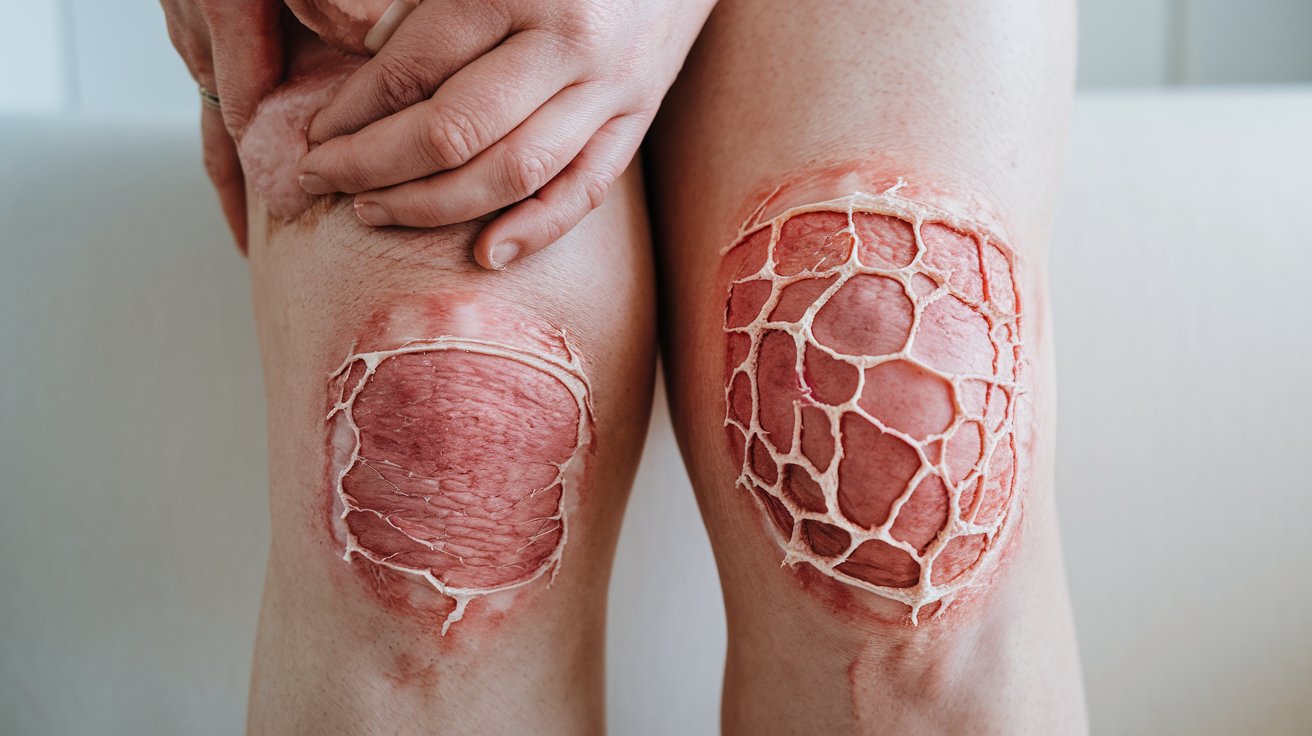
Pemphigus Erythematosus is a rare autoimmune disorder that affects the skin, causing blisters and sores. This condition often gets confused with other skin diseases due to its similar symptoms. Understanding Pemphigus Erythematosus can help in early diagnosis and better management. This blog post will provide you with 30 essential facts about this condition, from its causes to treatment options. Whether you're a patient, caregiver, or just curious, these facts will give you a clearer picture of what living with Pemphigus Erythematosus entails. Let's dive into the details and learn more about this intriguing skin disorder.
Key Takeaways:
- Pemphigus Erythematosus is a rare autoimmune disorder that causes blistering and sores on the skin. It primarily affects middle-aged adults and can be managed with medications, lifestyle adjustments, and regular monitoring.
- Research into genetic factors and new medications offers hope for better management of Pemphigus Erythematosus in the future. Historical awareness and patient advocacy are also crucial for supporting those affected by this condition.
Understanding Pemphigus Erythematosus
Pemphigus Erythematosus (PE) is a rare autoimmune disorder that affects the skin. It is a subtype of pemphigus, which involves blistering and sores on the skin and mucous membranes. Let's dive into some intriguing facts about this condition.
-
PE is a rare condition: It affects only a small percentage of the population, making it a rare autoimmune disorder.
-
Autoimmune nature: The body's immune system mistakenly attacks healthy cells in the skin, leading to blistering and sores.
-
Subtype of pemphigus: PE is one of several types of pemphigus, each with unique characteristics and symptoms.
-
Common in middle-aged adults: Most cases are diagnosed in individuals between 40 and 60 years old.
-
Gender prevalence: PE affects both men and women, but some studies suggest it may be slightly more common in women.
Symptoms and Diagnosis
Recognizing the symptoms and understanding the diagnostic process is crucial for managing PE effectively.
-
Blistering and sores: The primary symptoms include blisters and sores on the skin, often appearing on the face and scalp.
-
Erythematous lesions: These are red, inflamed patches that can be mistaken for other skin conditions like lupus.
-
Nikolsky's sign: A diagnostic test where slight rubbing of the skin causes it to peel away, indicating the presence of PE.
-
Biopsy confirmation: A skin biopsy is often performed to confirm the diagnosis by examining tissue samples under a microscope.
-
Blood tests: Specific antibodies associated with PE can be detected through blood tests, aiding in diagnosis.
Treatment Options
Managing PE involves a combination of medications and lifestyle adjustments to control symptoms and prevent flare-ups.
-
Corticosteroids: These are commonly prescribed to reduce inflammation and suppress the immune system.
-
Immunosuppressants: Medications like azathioprine or mycophenolate mofetil help control the immune response.
-
Topical treatments: Creams and ointments can be applied directly to affected areas to alleviate symptoms.
-
Antibiotics: These may be prescribed if there is a secondary bacterial infection due to open sores.
-
Regular monitoring: Frequent check-ups with a dermatologist are essential to monitor the condition and adjust treatments as needed.
Living with Pemphigus Erythematosus
Daily life with PE can be challenging, but understanding how to manage the condition can improve quality of life.
-
Sun protection: Wearing sunscreen and protective clothing helps prevent flare-ups triggered by sun exposure.
-
Gentle skincare: Using mild, fragrance-free products reduces irritation and helps maintain skin health.
-
Stress management: Stress can exacerbate symptoms, so practices like yoga or meditation can be beneficial.
-
Healthy diet: A balanced diet supports overall health and can help manage symptoms.
-
Support groups: Connecting with others who have PE provides emotional support and practical advice.
Research and Future Directions
Ongoing research aims to improve understanding and treatment of PE, offering hope for better management in the future.
-
Genetic studies: Research into genetic factors may reveal why some individuals develop PE while others do not.
-
New medications: Scientists are exploring new drugs that target specific aspects of the immune system.
-
Clinical trials: Participating in clinical trials can provide access to cutting-edge treatments and contribute to medical knowledge.
-
Biological therapies: These treatments use biological agents to modulate the immune system more precisely.
-
Patient registries: Collecting data from PE patients worldwide helps researchers identify patterns and improve care.
Historical Context and Awareness
Understanding the history and raising awareness about PE can lead to better recognition and support for those affected.
-
First described in 1926: PE was first identified by Dr. Herbert Fox, who noted its similarities to lupus erythematosus.
-
Named after lupus: The term "erythematosus" reflects the red, inflamed appearance of the lesions, similar to lupus.
-
Awareness campaigns: Organizations like the International Pemphigus & Pemphigoid Foundation work to raise awareness and support research.
-
Educational resources: Providing information to healthcare providers and the public helps improve early diagnosis and treatment.
-
Patient advocacy: Advocates work to ensure patients have access to necessary treatments and support services.
Final Thoughts on Pemphigus Erythematosus
Pemphigus Erythematosus, a rare autoimmune disorder, affects the skin and mucous membranes. Understanding its symptoms, causes, and treatments can help manage this condition better. Early diagnosis and treatment are crucial for improving quality of life. Regular check-ups with a dermatologist and following prescribed treatments can make a significant difference. Support from family and friends also plays a vital role in coping with the challenges of this disease. Staying informed and proactive can lead to better outcomes. If you or someone you know shows symptoms, consult a healthcare professional promptly. Knowledge and awareness are powerful tools in managing Pemphigus Erythematosus. Stay vigilant, stay informed, and take control of your health.
Frequently Asked Questions
Was this page helpful?
Our commitment to delivering trustworthy and engaging content is at the heart of what we do. Each fact on our site is contributed by real users like you, bringing a wealth of diverse insights and information. To ensure the highest standards of accuracy and reliability, our dedicated editors meticulously review each submission. This process guarantees that the facts we share are not only fascinating but also credible. Trust in our commitment to quality and authenticity as you explore and learn with us.


